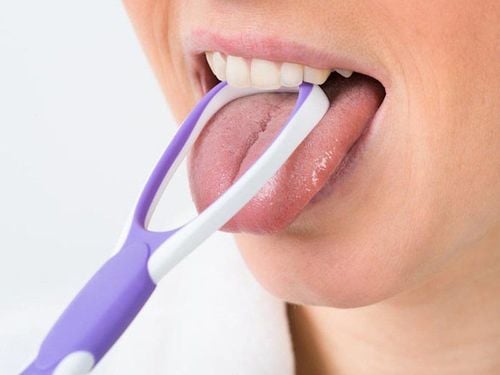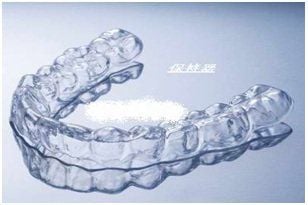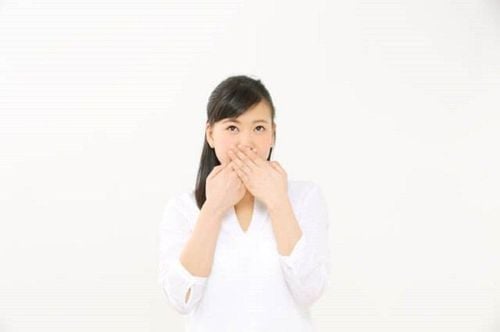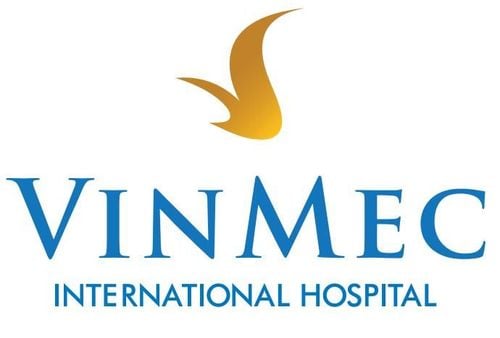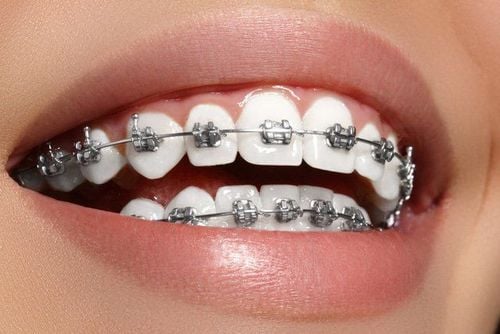This is an automatically translated article.
The article is professionally consulted by Dentist - Jaw - Facial - Department of Medical Examination & Internal Medicine - Vinmec Hai Phong International General Hospital
Misaligned teeth is one of the most common oral diseases, affecting the function of teeth and the aesthetics of the face. There are a few common types of misalignment of teeth in clinical practice such as deviated incisors, deviated lower molars, misaligned maxillary teeth, misaligned lower wisdom teeth or deviated 7th teeth...
1.The front teeth are misaligned
Deviated incisor is a state in which the two incisors grow crooked relative to the arch and to the adjacent teeth. The front teeth are the most noticeable part of the teeth, so when they are misaligned, they will greatly affect the aesthetics of the smile as well as the face. The misaligned incisors can be single or multiple teeth.Types of common deviated incisors in clinical practice:
V-shaped deviated incisors: two incisors grow out of alignment with other teeth, the inner edge of the contact between the two teeth forms an acute angle like the letter V. The incisors grow at an angle: they are also misaligned, but the teeth are not in a standing position, but tilted, they can be on the same side or opposite each other. The incisors are misaligned and uneven: it can be one main incisor that is protruding outward or inward, or both lateral incisors erupting inward, or one tooth is protruding with one erupting tooth. drooping in... Causes of misaligned incisors:
Due to innate position of the teeth are arranged in the wrong position leading to misalignment. The front teeth are pinched, pushed by other teeth, so they are out of position out of the dental arch. Due to diseases that cause early tooth loss such as crooked teeth, loss of molars or other teeth, leading to the creation of a gap on the dental arch, the teeth are displaced to fill the gap, leading to misalignment. Due to the habit of sucking fingers, holding a pacifier for a long time, sticking your tongue out or leaning against the front teeth... Orthodontic methods with misaligned front teeth:
Cosmetic porcelain crown: it doesn't take much orthodontic time, It only takes 2-4 days to see the change clearly, the maintenance time is 10-15 years depending on the location and type of porcelain used. Braces combined with orthodontics: takes more time than the other method, but after braces, teeth are naturally beautiful and in better position, the maintenance effect is permanent. For severe cases of misalignment, which cannot be used with porcelain veneers or braces, it is required to have orthodontic surgery, or tooth extraction that cannot be handled.
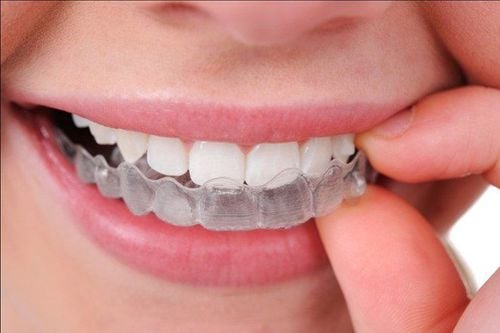
Niềng răng giúp điều chỉnh răng bị mọc lệch
2. Lower molars grow inwards
It is a condition in which the teeth in the lower jaw do not grow vertically close to the upper teeth but grow back inward. This condition not only affects aesthetics but also affects chewing function and oral health.The lower teeth that grow inward often cause a backbite, also known as underbite.
Causes of lower teeth growing inward:
Congenital, inherited from father or mother. Due to the habit of frequently holding hands, sucking fingers, pushing tongue... Due to early tooth loss. Optimal solution for misaligned lower teeth:
Aesthetic porcelain veneers. Cosmetic braces.
3. Teeth that are misaligned in the upper jaw
Similar to the lower teeth, misaligned teeth on the upper jaw is a phenomenon where the teeth in the upper jaw grow in a disorder that does not follow a certain position on the dental arch, some teeth grow out, some teeth go back in. crowded together ... causing loss of aesthetics, loss of harmony on the face, and at the same time affecting the chewing function of teeth.Misaligned upper teeth often cause horizontal protrusion.
Cause:
Genetics Due to the small lower teeth, when the teeth come out, the joints of the upper and lower jaws cannot match, leading to misaligned teeth. Due to bad habits such as thumb sucking, pacifier...
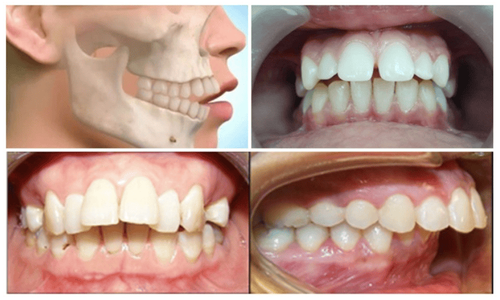
Răng hàm trên mọc lệch thường gây tình trạng răng hô theo chiều ngang
4. Wisdom teeth are misaligned
Wisdom teeth can grow in the upper jaw, lower jaw or both, but most often wisdom teeth grow out of the lower jaw.The main types of wisdom teeth deviation:
Proximal deviated teeth: the crown of the tooth is towards the 7th tooth. In this case, food is easily trapped between the 2 teeth causing tooth decay, sometimes the tooth decay spreads to the 7th tooth. , at the same time also cause pushing teeth. In some cases, inflammation can cause swelling and pain. Wisdom teeth grow far apart: in contrast to the situation of proximal deviation, the crown of the tooth is directed away, and the root of the 8th tooth is pushed into the root of the 7th tooth, causing severe pain at the root, which can lead to weakness in the long run. root of tooth 7. In severe cases, both teeth 7 and 8 will have to be extracted. Teeth erupt in the cheek area: the tip of the tooth is facing the cheek area, so when eating, it is easy to bite on the cheek causing damage, the cheek heat is repeated many times. Teeth erupting 90 degrees: is a situation where wisdom teeth grow horizontally. This is a common case in misaligned wisdom teeth, not only affecting tooth number 7 causing bone loss, inflammation or root cysts, but also can cause jaw dislocation.. Causes of wisdom teeth eruption Deviation :
Because wisdom teeth grow too late: usually wisdom teeth usually erupt at the age of 18-25 years. In late-growing people, when the teeth are almost completely stable in the arrangement of the teeth, wisdom teeth will have little or even no space to emerge, leading to misalignment. Because wisdom teeth erupt at the wrong time when the jaw structure is stable, the position of the teeth on the dental arch has also been fixed, so the wisdom teeth do not have enough position to stand, causing crowding and pushing of the adjacent teeth. edge. Wisdom teeth erupt when the gums are stable. Gums are an important part directly related to the eruption of wisdom teeth as well as other teeth. In adulthood, the gums are firm, densely covered with dental arches, hindering the development of wisdom teeth, slower growth time and can affect other teeth. Solutions to handle when wisdom teeth are misaligned:
For mild cases:
Use antibiotics, pain relievers and anti-inflammatory. Apply warmth on the outside of the cheek to the treatment area. Note cleaning the mouth area, gargling with physiological saline when having symptoms of toothache. For severe and moderate cases:
Go to a doctor for advice on antibiotics, anti-inflammatory drugs to reduce edema combined with surgery or tooth extraction if the pain is severe, affecting other functions.
5. Tooth number 7 is misaligned
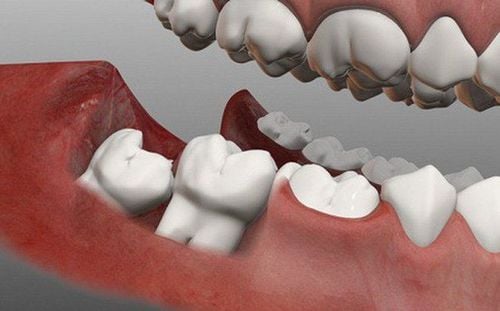
Răng số 7 mọc lệch cũng là một trong các vấn đề thường gặp trong nha khoa
The pattern of deviation of tooth number 7 is similar to that of tooth number 8. Tooth number 7 can also grow sideways 90 degrees, or grow slightly at angles less than 45 degrees. Teeth can grow back in or out, can also erupt into tooth 6.
Usually in cases where tooth number 7 is misaligned, there will be indications for tooth extraction. However, tooth number 7 along with tooth number 6 play an important role in the function of chewing and grinding food. If tooth number 7 is extracted, it will lead to tooth loss, not only affecting chewing function but also creating conditions for other teeth to be pushed. On the other hand, in the 7th tooth region, there are also many nerves involved, so when specifying tooth extraction, you must be very careful and consider carefully before specifying extraction.
In addition to the above common problems, in clinical practice, there may also be some cases of misaligned teeth showing wide teeth, crowded teeth, midline deviation, mismatched jaws, or overbite. ..
Vinmec Times City International Hospital now has a new generation of orthodontic braces applied to cases of misaligned teeth, crowded teeth, wide teeth, overbite, underbite, malocclusion, .. .makes the face lose its aesthetic appearance, helps to adjust and regain the aesthetics of teeth, smile and face by orthodontic method.
The advantages of the new generation of braces include:
Metal braces are an orthodontic method thanks to the force of the brackets to bring the teeth into the desired position, by the metal bracket. Stable, but the time of braces with this type of bracket is shortened compared to other types of brackets. The treatment with metal braces is not too complicated like lingual braces or porcelain braces, plus the cost-effective treatment are the outstanding advantages of this type of braces. In addition, metal braces also bring high orthodontic efficiency, time is shortened to the maximum and is easy to replace when falling off. With a team of highly qualified specialists with many years of experience, the new generation of orthodontic braces can help you overcome crowded teeth and bring a bright smile with your teeth. as the.
Please dial HOTLINE for more information or register for an appointment HERE. Download MyVinmec app to make appointments faster and to manage your bookings easily.




